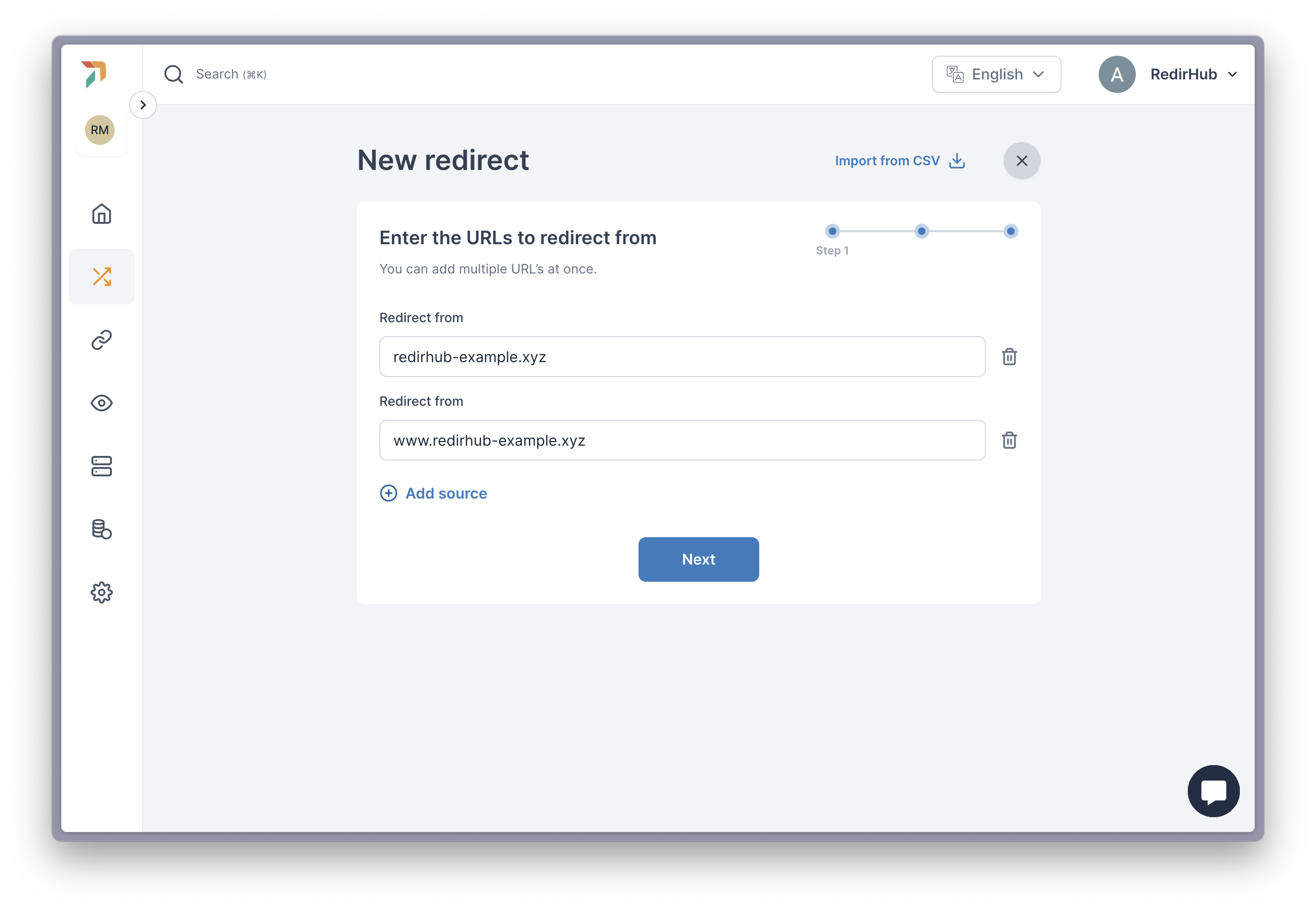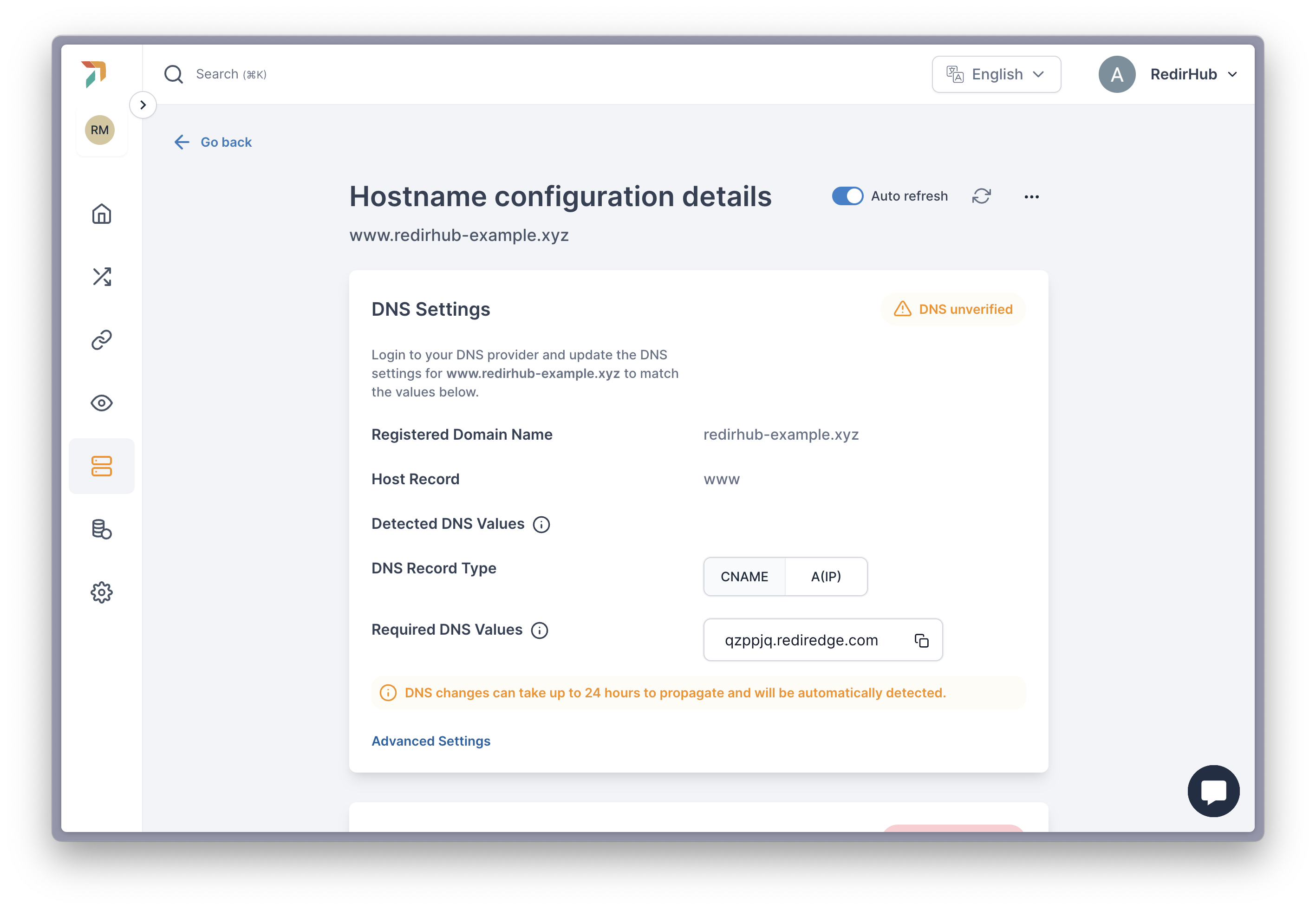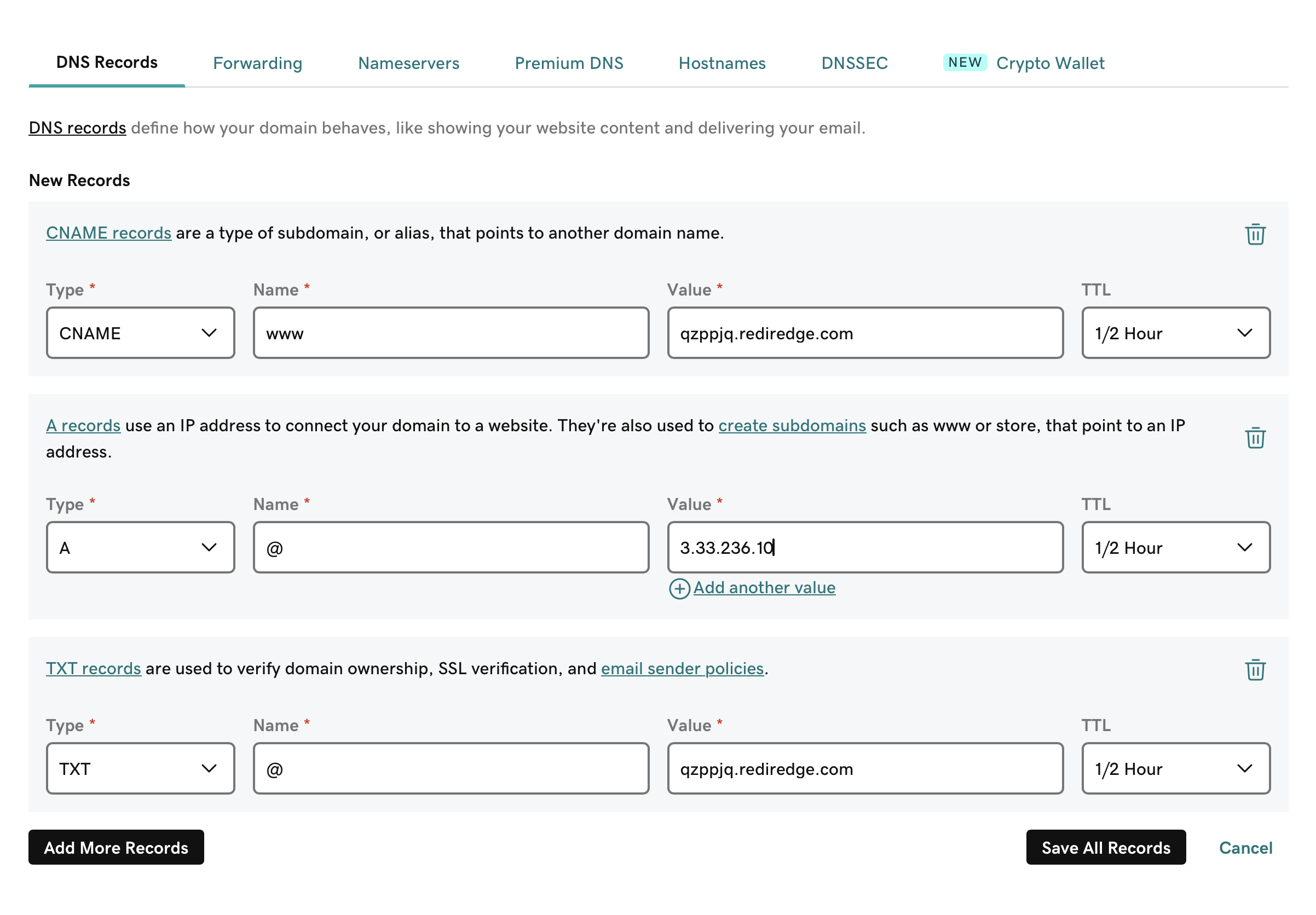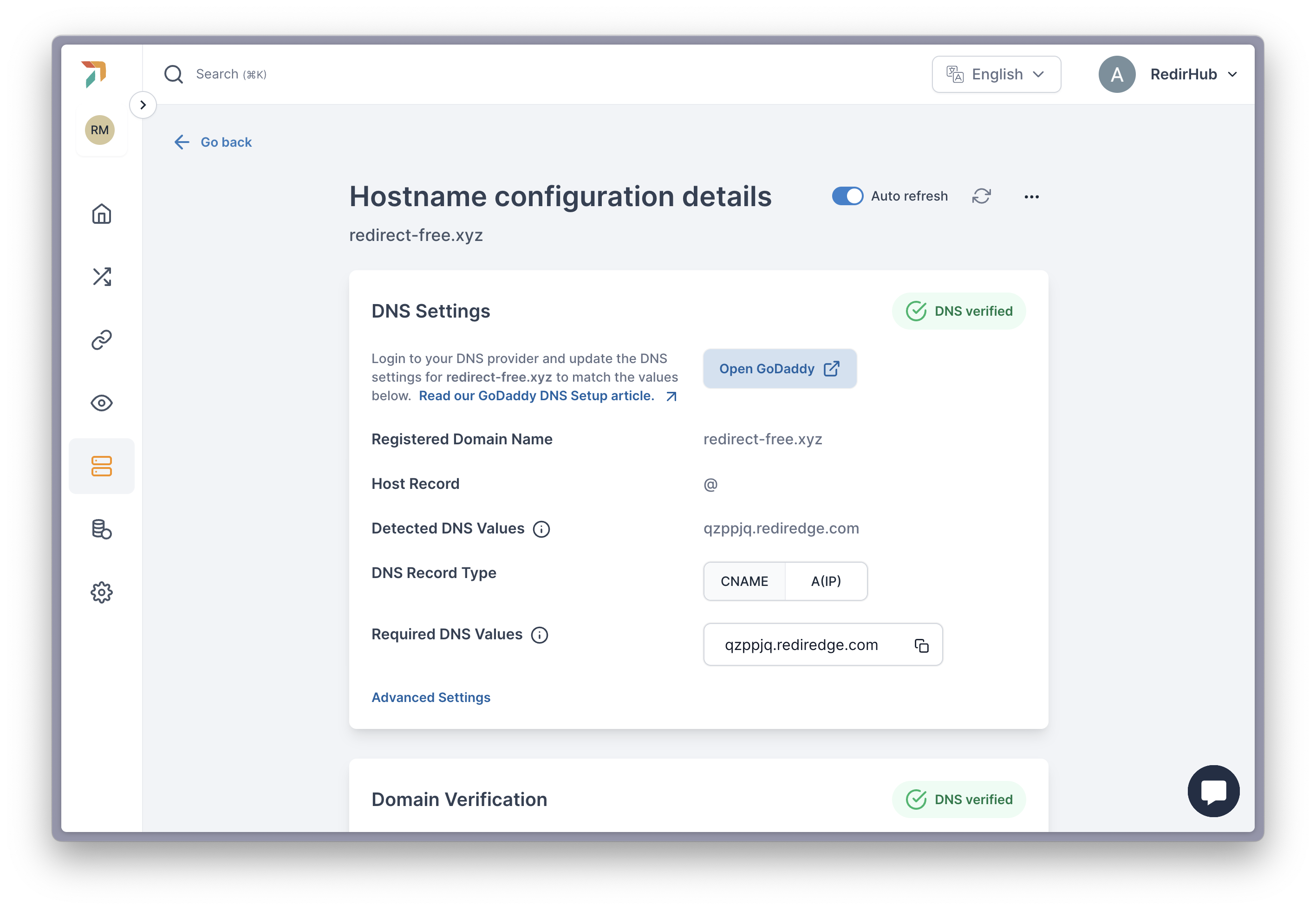Avant de commencer, il est crucial de s'assurer que vous possédez ou avez accès au domaine que vous souhaitez rediriger. En savoir plus ici.
Étape 1 : Créez un compte RedirHub
Pour utiliser RedirHub, vous devrez d'abord créer un compte. C'est un processus rapide et facile qui peut être effectué en visitant notre page d'inscription : Inscription RedirHub.
Étape 2 : Ajoutez votre domaine à RedirHub

Après vous être inscrit, l'étape suivante consiste à ajouter le domaine que vous souhaitez rediriger. Par exemple, si vous avez un domaine nommé ‘redirhub-example.xyz’ enregistré auprès de GoDaddy, vous devez entrer ce domaine dans le champ ‘Rediriger de’ sur RedirHub.
Il est conseillé d'inclure à la fois la version www et la version apex (non-www) de votre domaine pour garantir une couverture complète.

Une fois ajouté, vous verrez le bouton Vérifier le statut DNS et cliquerez dessus. Cela tournera et indiquera que les valeurs DNS détectées diffèrent de celles requises, montrant qu'un changement DNS est nécessaire.
Étape 3 : Effectuer le changement DNS

Cette étape consiste à mettre à jour les paramètres DNS avec votre registraire de domaine ou votre fournisseur DNS. Chaque fournisseur a un processus légèrement unique, mais vous devrez accéder aux paramètres de zone DNS de votre domaine et apporter les modifications comme indiqué par RedirHub.

Pour des conseils précis, contactez votre fournisseur de domaine directement et partagez les changements DNS requis par RedirHub. La plupart des fournisseurs offrent un support et peuvent vous aider à effectuer ces mises à jour.
Étape 4 : En attente
Une fois les changements DNS effectués, il y a une période de propagation pendant laquelle les mises à jour se propagent sur internet. Vous pouvez suivre l'avancement de ces changements en utilisant un outil comme WhatsMyDNS. Pour notre exemple, vous pouvez vérifier le statut de ‘www.redirhub-example.xyz’ ici : WhatsMyDNS – RedirHub Example.
La propagation DNS peut prendre jusqu'à 24 heures. Lorsque le processus est complet, RedirHub détectera les changements et affichera une coche verte à côté des enregistrements DNS, montrant que tout est configuré correctement.
Étape 5 : Fait !

Une fois que vous voyez le vert « DNS Vérifié », la redirection de votre domaine est pleinement opérationnelle. Le trafic passera maintenant sans difficulté à travers RedirHub, garantissant que vos redirections fonctionnent comme prévu.
Votre redirection est maintenant complète !
[/et_pb_text][/et_pb_column] [/et_pb_row] [/et_pb_section]

